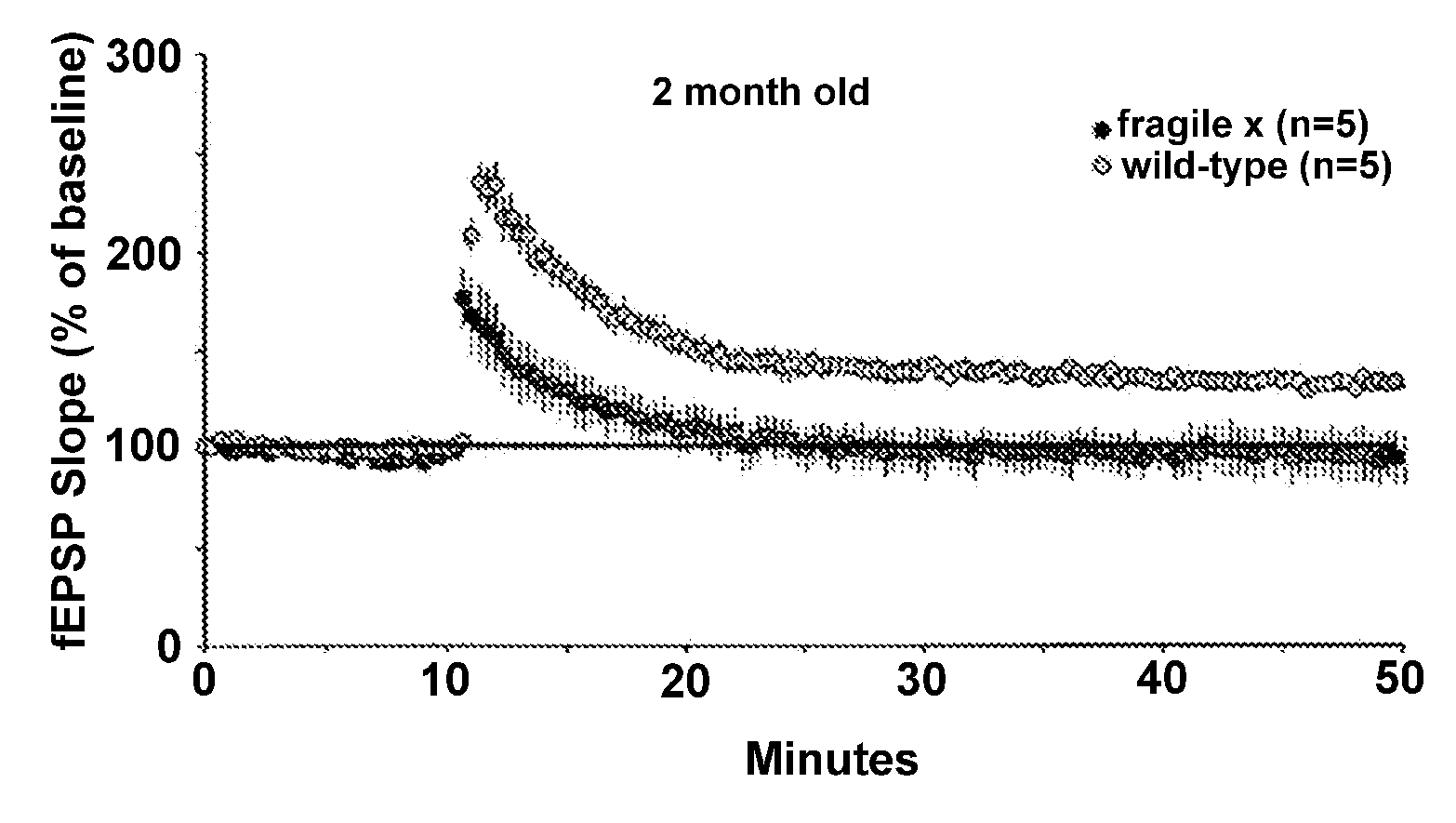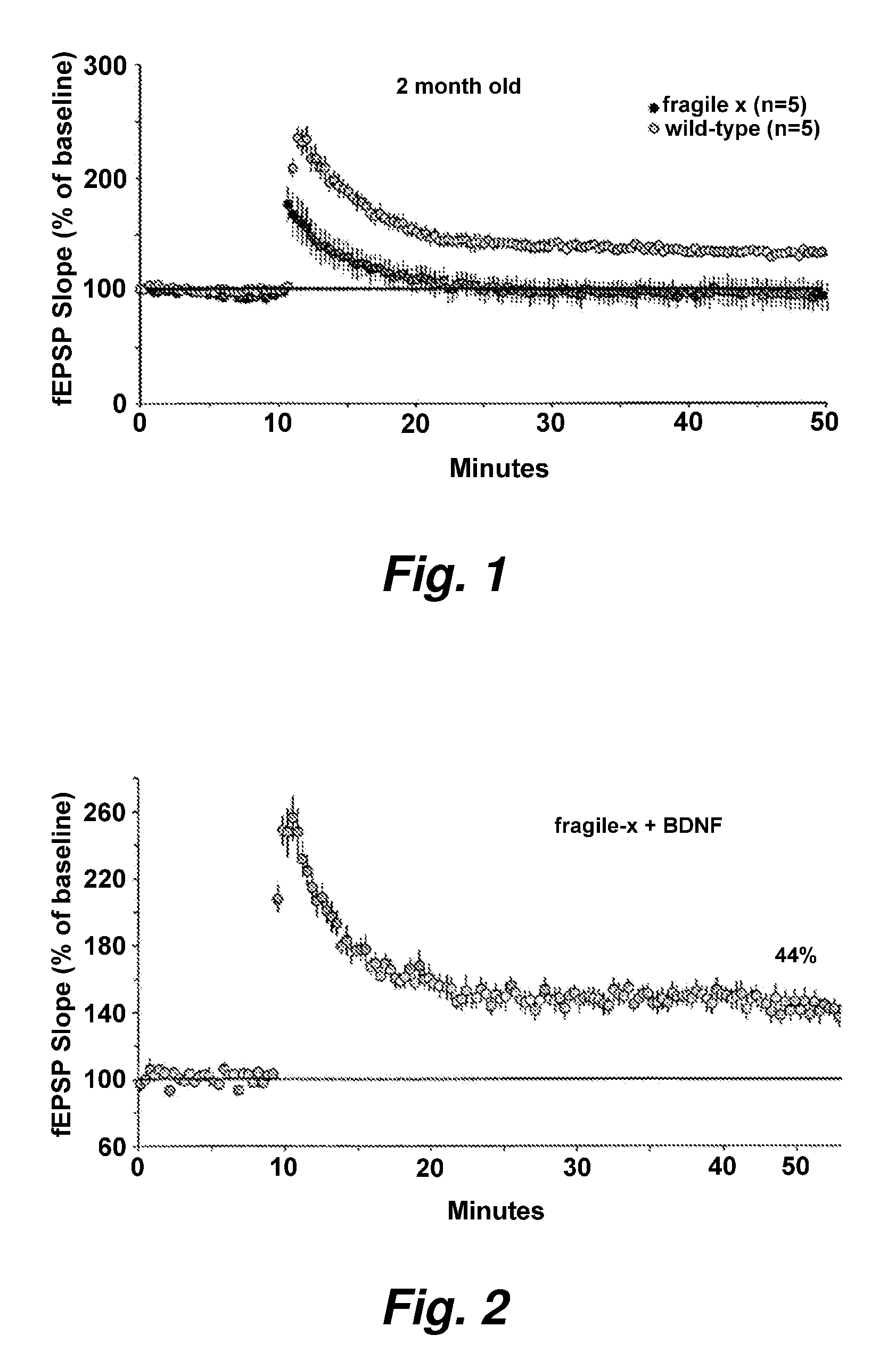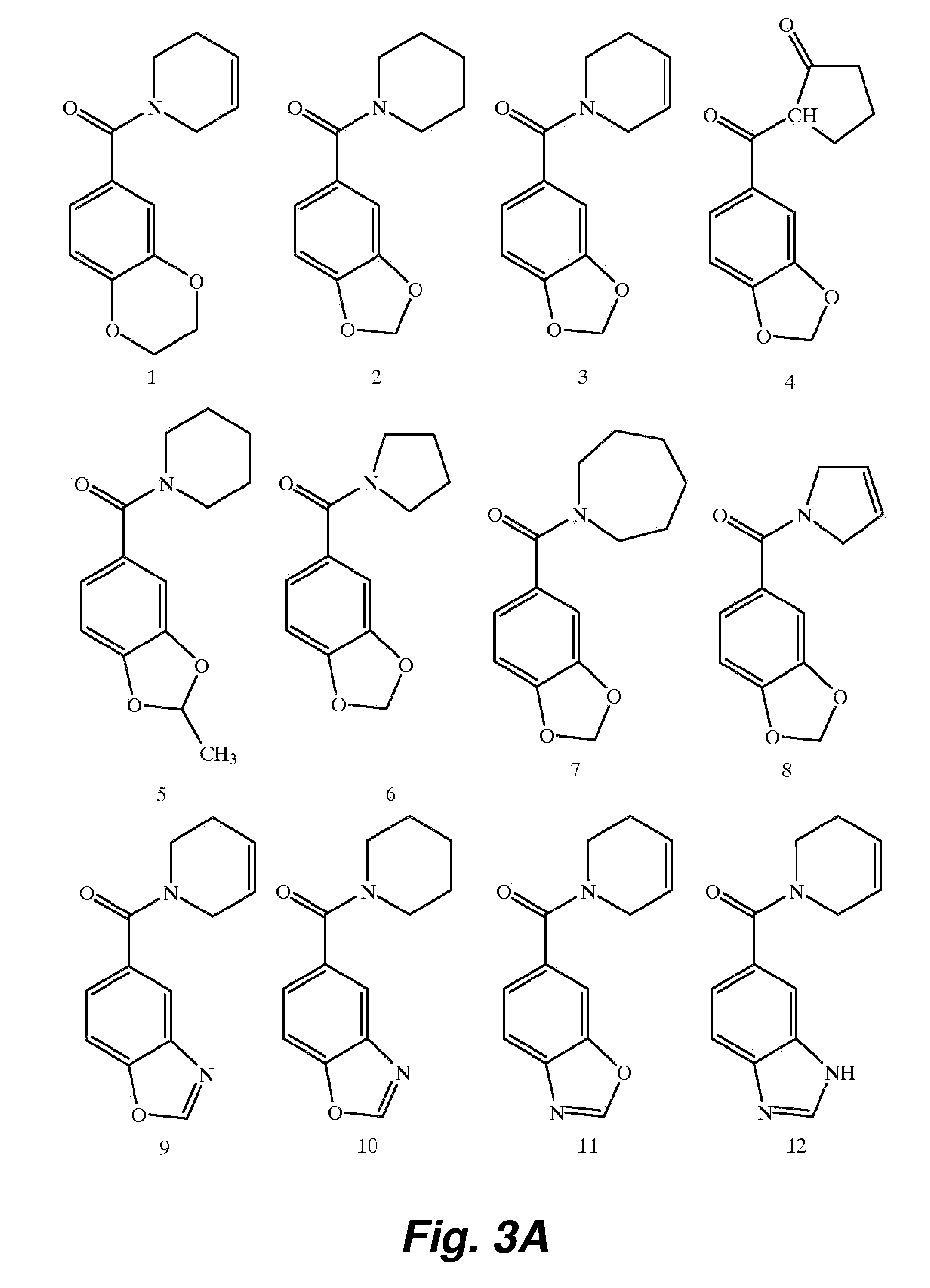Upregulating bdnf levels to mitigate mental retardation
a technology of mental retardation and bdnf, applied in the field of mental retardation, to achieve the effect of reducing autistic-like behavior, increasing bdnf activity, and improving learning ability or memory
- Summary
- Abstract
- Description
- Claims
- Application Information
AI Technical Summary
Benefits of technology
Problems solved by technology
Method used
Image
Examples
example 1
[0167]Electrophysiological studies of hippocampal slices from young adult Fmr1-KO and wildtype mice demonstrated that Fmr1-KOs had altered long term potentiation (LTP) within the apical dendritic field of region CAI. Specifically, using a sub-threshold electrical stimulation paradigm to induce LTP, hippocampal slices from fragile X mice had no detectable LTP whereas wildtype slices showed stable LTP (411% above baseline). A series of experiments in young mice (2-3 mo old) that demonstrated a similar difference between Fmr1-KOs and WTs on LTP (see, e.g., FIG. 1). We treated hippocampal slices with BDNF (15 ng / ml) and found that it restored normal LTP in the Fmr1-KO slices (>40% above baseline) (see, e.g., FIG. 2).
[0168]This finding demonstrates that BDNF can restore normal synaptic plasticity in a mouse model of fragile X and indicates that BDNF could be used to treat mental retardation. For the purposes of this invention, any and all means to increases BDNF levels in the brain could...
example 2
Brain-Derived Neurotrophic Factor Rescues Synaptic Plasticity in a Mouse Model of Fragile X Syndrome
[0169]Mice lacking expression of the fragile X mental retardation 1 (Fmr1) gene have deficits in types of learning that are dependent on the hippocampus. Here, we report that long-term potentiation (LTP) elicited by threshold levels of theta burst afferent stimulation (TBS) is severely impaired in hippocampal field CA1 of young adult Fmr1 knock-out mice. The deficit was not associated with changes in postsynaptic responses to TBS, NMDA receptor activation, or levels of punctate glutamic acid decarboxylase-65 / 67 immunoreactivity. TBS-induced actin polymerization within dendritic spines was also normal. The LTP impairment was evident within 5 min of induction and, thus, may not be secondary to defects in activity-initiated protein synthesis. Protein levels for both brain-derived neurotrophic factor (BDNF), a neurotrophin that activates pathways involved in spine cytoskeletal reorganizat...
PUM
 Login to View More
Login to View More Abstract
Description
Claims
Application Information
 Login to View More
Login to View More - R&D
- Intellectual Property
- Life Sciences
- Materials
- Tech Scout
- Unparalleled Data Quality
- Higher Quality Content
- 60% Fewer Hallucinations
Browse by: Latest US Patents, China's latest patents, Technical Efficacy Thesaurus, Application Domain, Technology Topic, Popular Technical Reports.
© 2025 PatSnap. All rights reserved.Legal|Privacy policy|Modern Slavery Act Transparency Statement|Sitemap|About US| Contact US: help@patsnap.com



